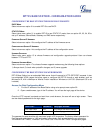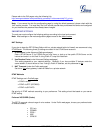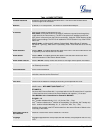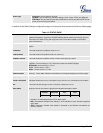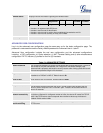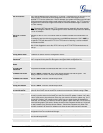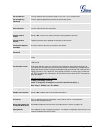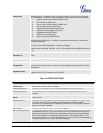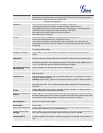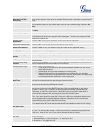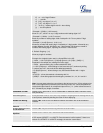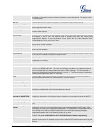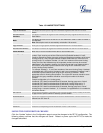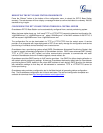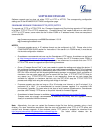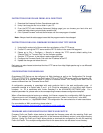
Firmware version 1.0.0.8 DP715/DP710 User Manual Page 42 of 52
If the NAT Traversal field is set to “Yes” with no specified STUN server, the DP715 will
periodically (every 20 seconds or so) send a blank UDP packet (with no payload data) to
the SIP server to keep the “hole” on the NAT open.
Advance Configuration
DNS Mode
One from the 3 modes are available for “DNS Mode” configuration:
-A Record (for resolving IP Address of target according to domain name)
-SRV (DNS SRV resource records indicates how to find services for various protocols)
-NAPTR/SRV (Naming Authority Pointer according to RFC 2915)
One mode can be chosen for the client to look up server.
The default value is “A Record”
Tel URI
The default setting is “Disabled”. If the phone has an assigned PSTN
Number, this field should be set to “User=Phone” then a
“User=Phone” parameter will be attached to the “From header” in the SIP request to
indicate the E.164 number. If server supports TEL URI format, then this option needs to
be selected.
SIP Registration
Controls whether the DP715 needs to send REGISTER messages to the proxy server.
The default setting is Yes.
Unregister on Reboot
Default is No. If set to Yes, the SIP user’s registration information will be cleared on
reboot.
Outgoing Call without
Registration
Default is No. If set to “Yes,” user can place outgoing calls even when not registered (if
allowed by Internet Telephone Service Provider) but is unable to receive incoming calls.
Register Expiration
This parameter allows the user to specify the time frequency (in minutes) the DP715
refreshes its registration with the specified registrar. The default interval is 60 minutes (or
1 hour). The maximum interval is 65535 minutes (about 45 days).
SIP Registration Failure
Retry Wait Time
Retry registration if the process failed. Default is 20 seconds.
Local SIP port
Defines the local SIP port the DP715 will listen and transmit. Default is 5060 for profile 1 &
6060 for profile 2.
Local RTP port
Defines the local RTP port the DP715 will listen and transmit. It is the base RTP port for
channel 0. When configured,
channel 0 uses this port _value for RTP. Default is 5004 for profile 1 & 6004 for profile 2.
Use Random Port
Default is No. This parameter forces the random generation of both the local SIP and RTP
ports when set to Yes. This is usually necessary when multiple DP715 are behind the
same NAT.
Refer-To Use Target
Contact
Default is No. If set to YES, then for Attended Transfer, the “Refer-To” header uses the
transferred target’s Contact header information.
Transfer on Conference
Hang up
Default is No. In which case if the conference originator hangs up the conference will be
terminated. When option YES is chosen, originator will transfer other parties to each other
so that B and C can choose to either continue the conversation or hang up.
Disable Bellcore Style 3-
Way Conference
Default is No. you can make a Conference by pressing ‘Flash’ key. If set to Yes, you need
to dial *23 + second callee number.
Remove OBP from
Route Header
Default is No. When option YES is chosen, the Out Bound Proxy will be removed from
Route header.
Support SIP Instance ID
Default is Yes. If set to Yes, the contact header in REGISTER request will contain SIP
Instance ID as defined in IETF SIP Outbound draft.
Validate incoming SIP
message
Default is No. If set to yes all incoming SIP messages will be strictly validated according to
RFC rules. If message will not pass validation process, call will be rejected.
Check SIP User ID for
incoming INVITE
Default is No. Check the incoming SIP User ID in Request URI. If they don’t match, the
call will be rejected. If this option is enabled, the device will not be able to make direct IP
calls.



